
Here you will learn about ordering fractions from least to greatest and greatest to least.
Students will first learn about ordering fractions as part of numbers and operations of fractions in 4th grade.
Ordering fractions is arranging a set of fractions from least to greatest (ascending order) or from greatest to least (descending order).
To do this, rewrite the fractions so that they have common denominators. Then, compare the numerators.
If you order these fractions from least to greatest…

The order becomes…

You can prove this order is correct by creating common denominators. All the denominators (2, 4 and 8) have a common multiple of 8, so you can use 8 as the common denominator.

Now the equivalent fractions are: \; \cfrac, \cfrac, \cfrac, \cfrac, \cfrac.
Since the fractions have the same denominators all the parts are the same size. You can use the size of the numerators to order the fractions. The fractions are in order from least to greatest, because the numerators are in order from least to greatest.
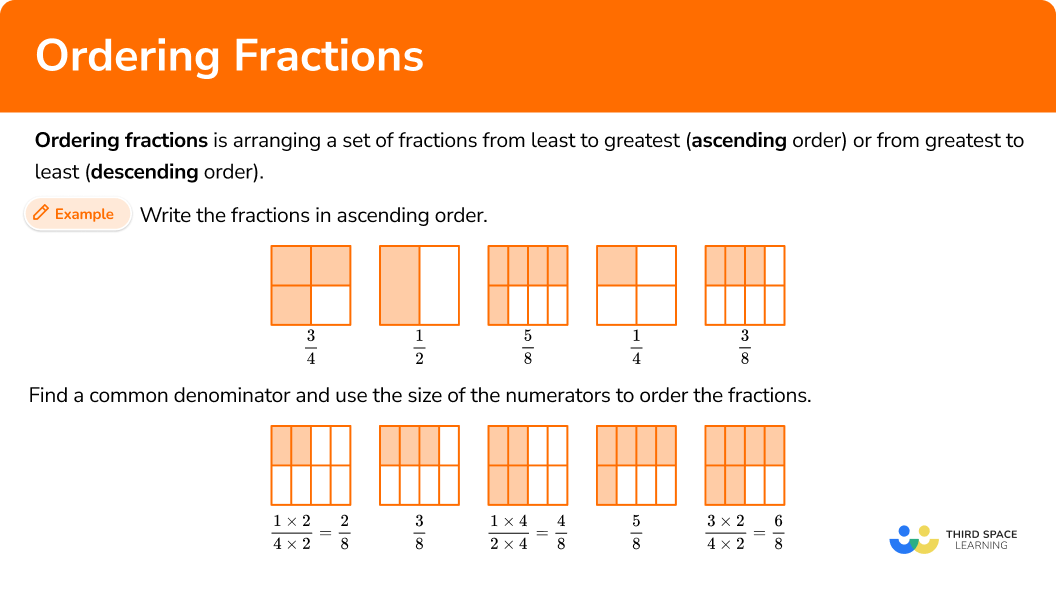
How does this relate to 4th grade math?
In order to order fractions:
In order to order mixed numbers:
![[FREE] Ordering Fractions Worksheet (Grade 4)](https://thirdspacelearning.com/wp-content/uploads/2023/11/Ordering-Fractions-Worksheet-listing-image.png)
![[FREE] Ordering Fractions Worksheet (Grade 4)](https://thirdspacelearning.com/wp-content/uploads/2023/11/Ordering-Fractions-Worksheet-listing-image.png)
Use this worksheet to check your grade 4 students’ understanding of ordering fractions. 15 questions with answers to identify areas of strength and support!
![[FREE] Ordering Fractions Worksheet (Grade 4)](https://thirdspacelearning.com/wp-content/uploads/2023/11/Ordering-Fractions-Worksheet-listing-image.png)
![[FREE] Ordering Fractions Worksheet (Grade 4)](https://thirdspacelearning.com/wp-content/uploads/2023/11/Ordering-Fractions-Worksheet-listing-image.png)
Use this worksheet to check your grade 4 students’ understanding of ordering fractions. 15 questions with answers to identify areas of strength and support!
Order the fractions from least to greatest.

All the denominators (2, 4, 6 and 12) have a multiple of 12, so you can use 12 as the common denominator.




2 Order the fractions by the size of the numerator.
Here are the equivalent fractions with the common denominator of 12 :

Now that the denominators are like, you can order them from least to greatest by the numerator:

3 Rewrite the fractions in their original form.
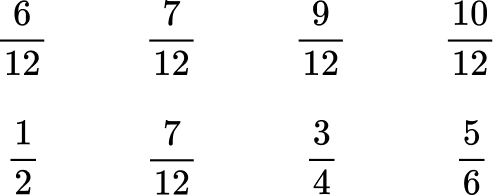
Order the fractions from greatest to least.

Create equivalent fractions that have a common denominator.
All the denominators (3, 4, 6 and 8) have a multiple of 24, so you can use 24 as the common denominator.




Order the fractions by the size of the numerator.
Here are the equivalent fractions with the common denominator of 24 :

Now that the denominators are like, you can order them from greatest to least by the numerator:

Rewrite the fractions in their original form.
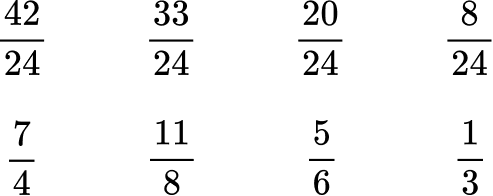
Order the numbers from greatest to least.

Convert mixed numbers to improper fractions.
You can write all the numbers as fractions (proper and improper) or as mixed numbers. To use the same steps as above, write them all as fractions.
For 1\cfrac, break the whole into halves, then count the total halves.
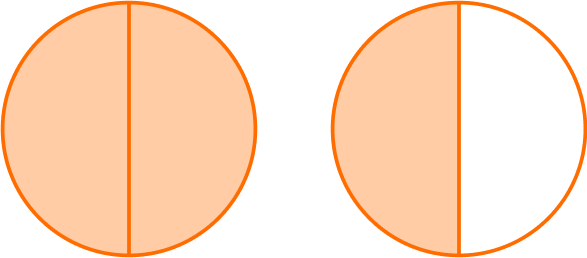
There are 3 halves, so 1 \cfrac = \cfrac.
For 1 \cfrac, break the whole into thirds, then count the total thirds.

There are 5 thirds, so 1 \cfrac = \cfrac.
Create equivalent fractions that have a common denominator.
All the denominators (2, 3, 5 and 10) have a multiple of 30, so you can use 30 as the common denominator.




Order the fractions by the size of the numerator.
Here are the equivalent fractions with the common denominator of 30 :

Now that the denominators are like, you can order them from greatest to least by the numerator:

Rewrite the fractions in their original form.
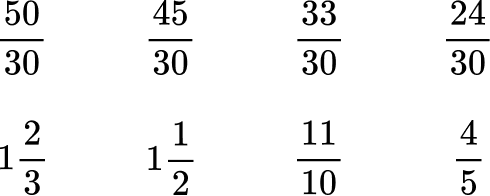
Order the numbers from least to greatest.

Convert mixed numbers to improper fractions.
You can write all the numbers as fractions (proper and improper) or as mixed numbers. To use the same steps as above, write them all as fractions.
For 2 \cfrac, break the wholes into fifths, then count the total fifths.

There are 11 fifths, so 2 \cfrac = \cfrac.
For 2 \cfrac, break the whole into tenths, then count the total tenths.

There are 23 tenths, so 2 \cfrac = \cfrac.
Create equivalent fractions that have a common denominator.
All the denominators (2, 4, 5 and 10) have a common multiple of 20, so you can use 20 as the common denominator.




Order the fractions by the size of the numerator.
Here are the equivalent fractions with the common denominator of 20 :

Now that the denominators are like, you can order them from least to greatest by the numerator:

Rewrite the fractions in their original form.
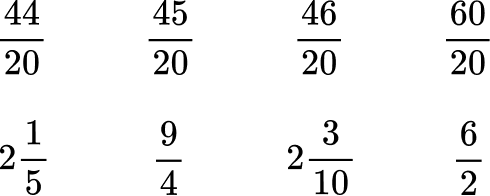
Order the numbers from greatest to least.

Convert mixed numbers to improper fractions.
You can write all the numbers as fractions (proper and improper) or as mixed numbers. To use the same steps as above, write them all as fractions.
For 1\cfrac, break the whole into thirds, then count the total thirds.

There are 4 thirds, so 1\cfrac = \cfrac.
For 1\cfrac, break the whole into halves, then count the total halves.
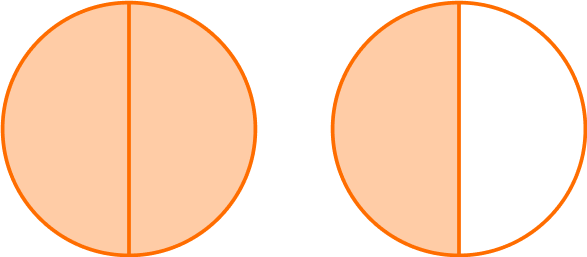
There are 3 halves, so 1\cfrac = \cfrac.
Create equivalent fractions that have a common denominator.
All the denominators (2, 3, 6 and 9) have a common multiple of 18, so you can use 18 as the common denominator.




Order the fractions by the size of the numerator.
Here are the equivalent fractions with the common denominator of 18 :

Now that the denominators are like, you can order them from greatest to least by the numerator:

Rewrite the fractions in their original form.
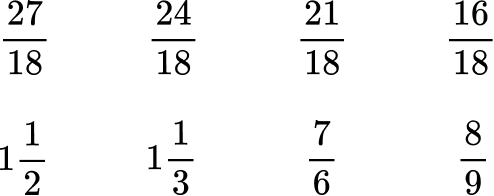
For example,
\cfrac may seem smaller than \cfrac, since 3 and 4 are smaller numbers, but if you use a common denominator to compare them, you see that \cfrac is the larger fraction:
For example,
Write these numbers in order of size:
\cfrac \quad \cfrac \quad \cfrac
With the same denominator:
\cfrac \quad \cfrac \quad \cfrac
In order of size:
\cfrac \quad \cfrac \quad \cfrac
The final answer is:
\cfrac \quad \cfrac \quad \cfrac